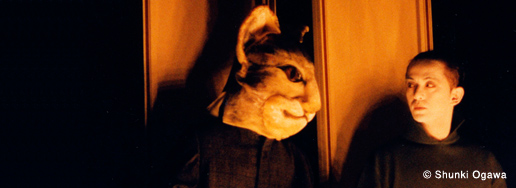DAH-DAH-SKO-DAH-DAH

Performing Arts Festival launching from Tokyo
Ever since the start of his dance career in 1981 and then his shocking overseas debut in 1986, Saburo Teshigawara has been a force in the world dance and art scenes, famed for his inimitable aesthetic sensibility. Teshigawara is active at festivals and theatres in Japan and abroad throughout the year, and further is also unique among Japanese peers for his frequent commissions from prestigious ballet companies and dance groups across Europe and America, including regular offers to direct at major opera houses.
In recent years he has been engaging in collaborations with classical musicians. Fresh in the memory is his co- performance with violinist Sayaka Shoji at La Folle Journée in Tokyo just this year. He sculpts a completely original world in his work, handling the choreography and direction, stage design and lighting all himself. He is also acclaimed overseas as a director, sculptural artistic and video artist.
The work he will present at F/T12 is inspired by the poem "Haratai Kenbairen" by poet Kenji Miyazawa, from the famous collection "Spring and Asura" (Haru to shura). "DAH-DAH-SKO-DAH-DAH" was first performed in 1991 and revised in 1994, and now will be fully re-staged and adapted once again.
"Haratai kenbairen" is a long poem written by Kenji Miyazawa themed around the "kenbai" folk dance practised for over 100 years in the northern Iwate mountain village of Esashi. Miyazawa himself composed around 20 songs in his short lifetime and is known to have said that music flowed in the currents of his own literary world. When he was young he was enamored with the classical music of Beethoven and Debussy, and then in his last years is said to have become awakened to the music of his native province of Iwate. In Miyazawaʼs musical works we can thus feel a "globalized" perspective in the commingling of Occidental and Oriental (or Japanese folk) elements.
Teshigawara is enchanted by Miyazawaʼs musical poem and drew the title of "DAH-DAH-SKO-DAH-DAH" from a part of "Haratai Kenbairen", an onomatopoeia expressing the beating of the kenbai taiko drums, the sound of the wind, and the pulsing of the heart. The dancer weaved through Miyazawaʼs mineral psyche in an air rich with noise music, music being ripped apart into proto-music grains and clusters of sound, transforming a physicalized space of dancers, objects and lighting. After its premiere it was performed in 9 countries and 18 cities worldwide, including New York, the UK, and Canada, where it won a major award at the Festival International de Nouvelle Danse in Montreal. Now it returns in a newly imagined and recreated version.